We're very happy to have received several notable chips from donors and a bit of money to help process them. This has allowed us to tune and greatly improve the de-packaging chemistry and cleaning methods at a local lab, and we've just begun to post the results. The process and turnaround has become so good that we've now de-packaged 19 plastic-encased chips, most of these in just the last two weeks. This is in addition to about 10 ceramic sandwich or metal-capped chips that we've de-packaged with mechanical, not chemical, methods. Hopefully we'll find a bit of time to write about this on our site.
For now, allow us to present:
Our largest chip, the
Motorola 68000:
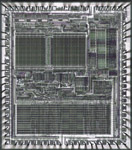
Our tiniest but most colorful chip, the
Nintendo 3193A:
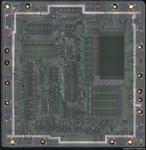
The three voices of the
Commodore 8580 SID:
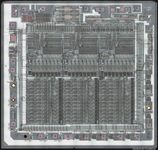
The loopy concentric transistors of the
RCA 1802:
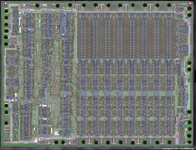
And finally, for Valentine's Day, the lovely pink
MOS 6522:
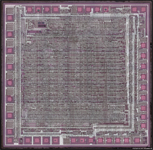
Now, to start de-layering and vectorizing!




